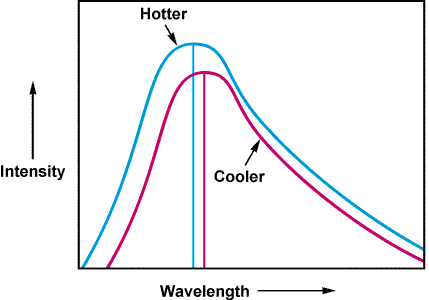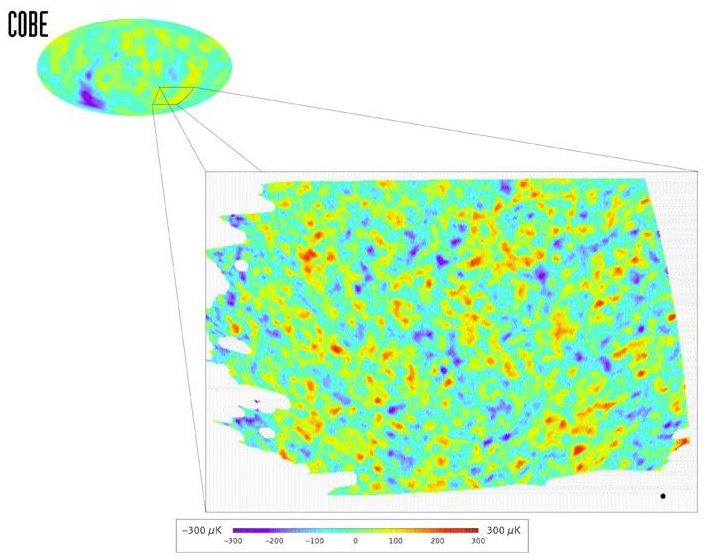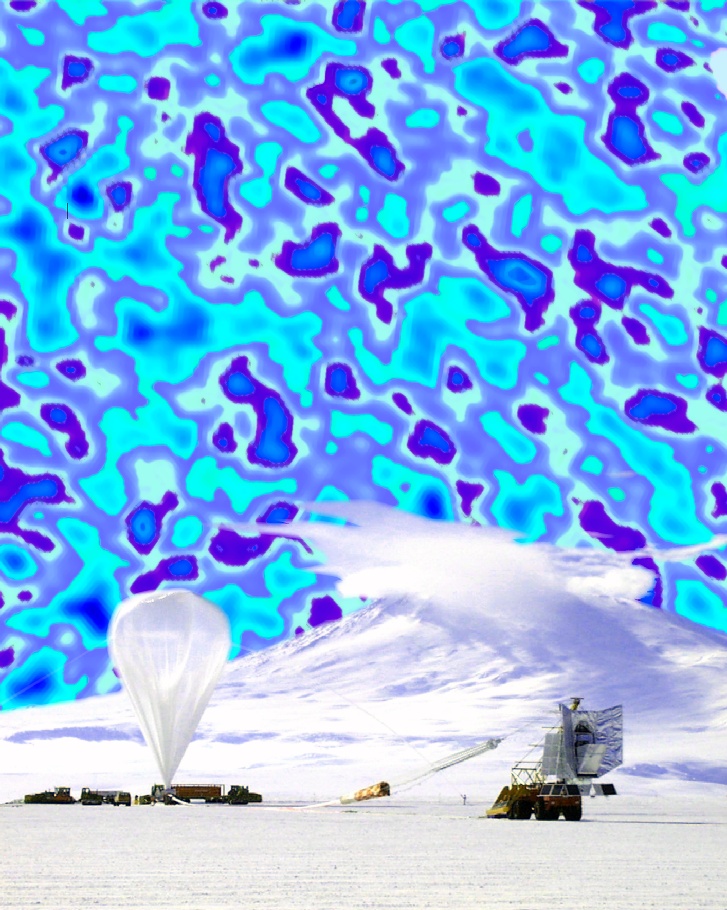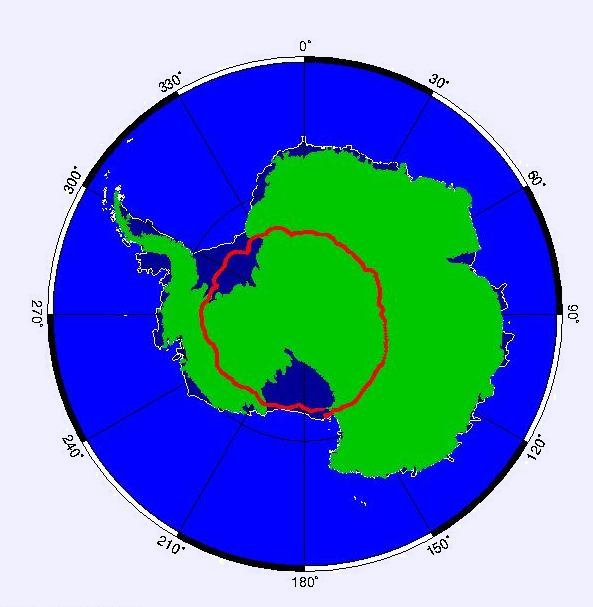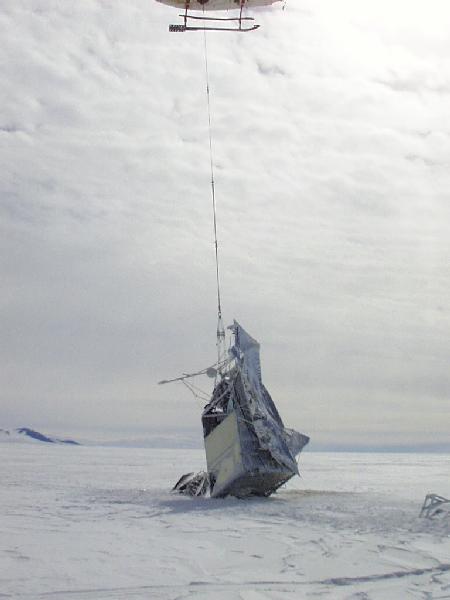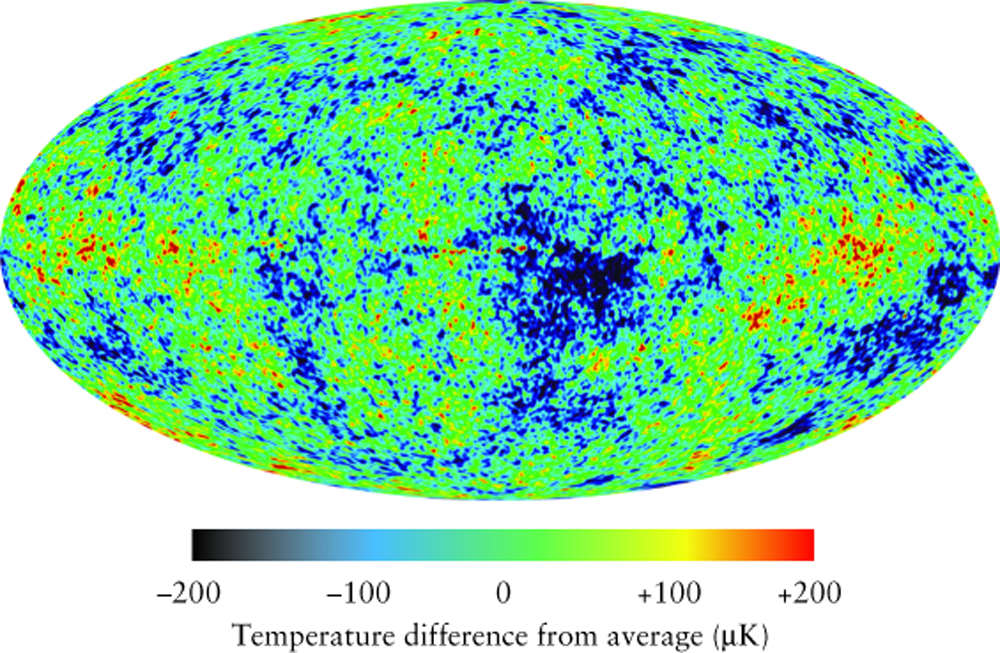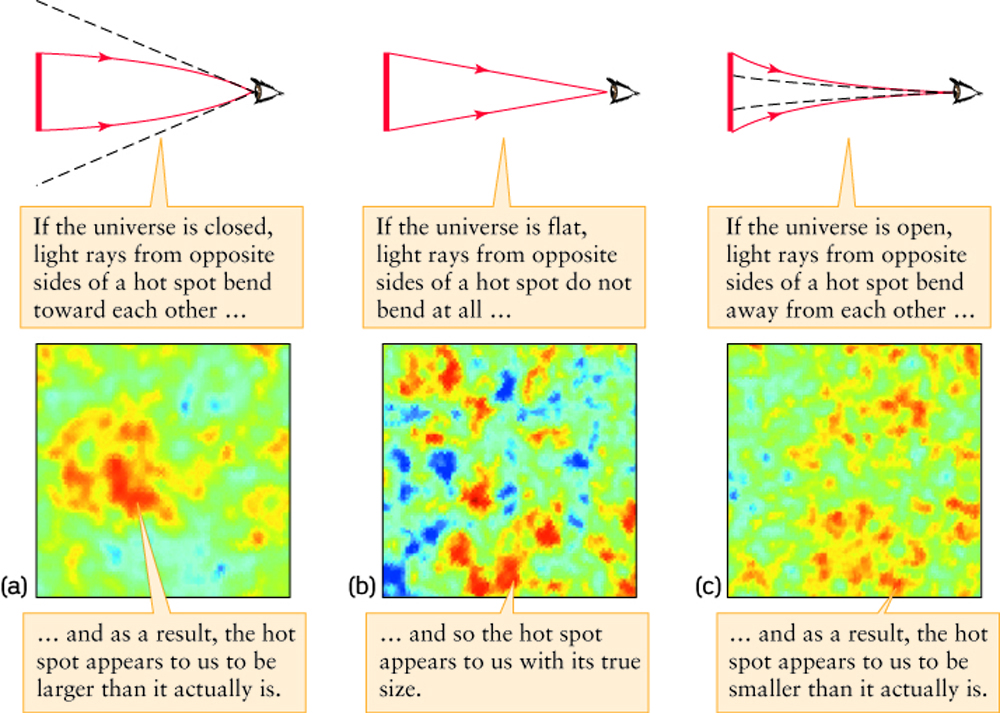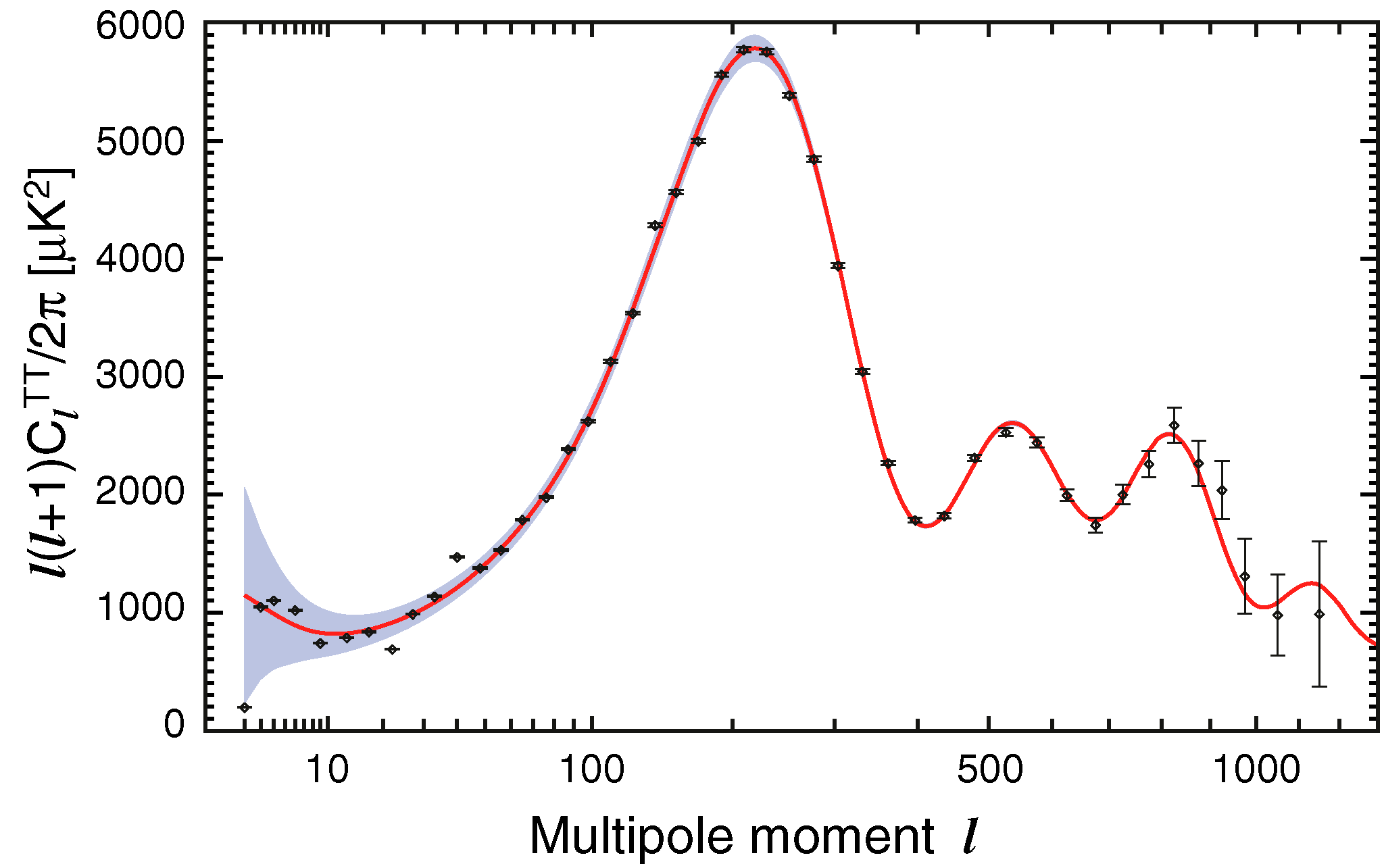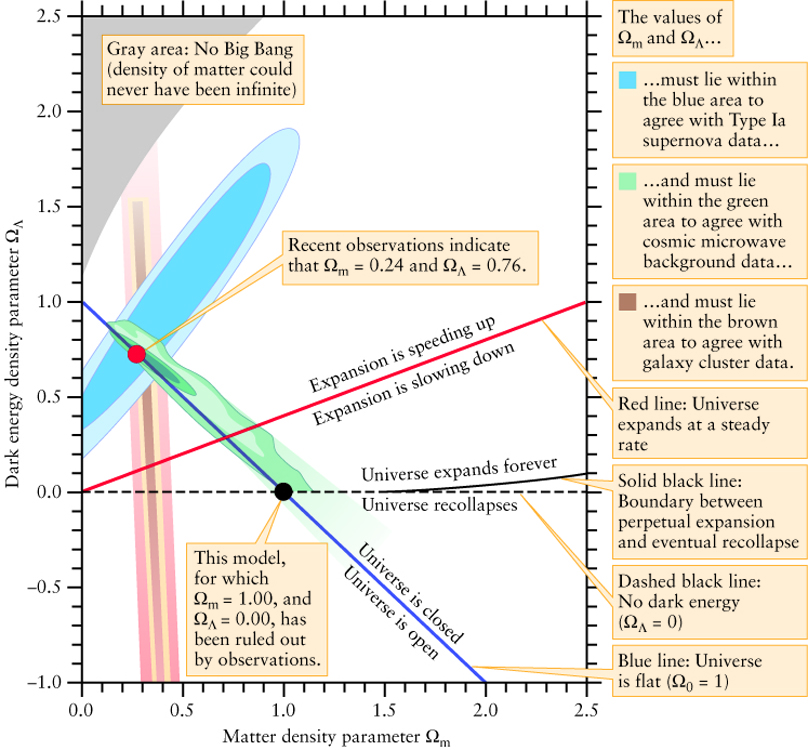The Era of Recombination
- Today, the Universe is transparent, since photons from
quasars a few billion light-years can reach our telescopes.
- How can the Universe become transparent?
- Get rid of the plasma: When a plasma is cool enough the
protons and electrons will combine to form neutral Hydrogen
which doesn't hinder photons. This occurs at a temperature
near 3000 K.
- Question: If recombination occured at T=3000 K, at what redshift
did it happen ?
- Answer
1+z = T / T(t0) = 3000 K /2.725 K &asymp 1100
- The time when the temperature is 3000 K is
around 370,000 years after the Big Bang
(use calculator)
and is called the
time of "recombination".
- The reaction p + e -> H is called recombination, although
in the early universe the protons and electrons had never
been joined, so it should really be called "combination".
- The time of recombination is the last time that photons
collide with matter (until the photons reach our eyes).
- When the photons hit our eyes, we call them the
Cosmic Background Radiation.
- This time is also called the time of last scattering.
|

a) Before the recombination
 |
